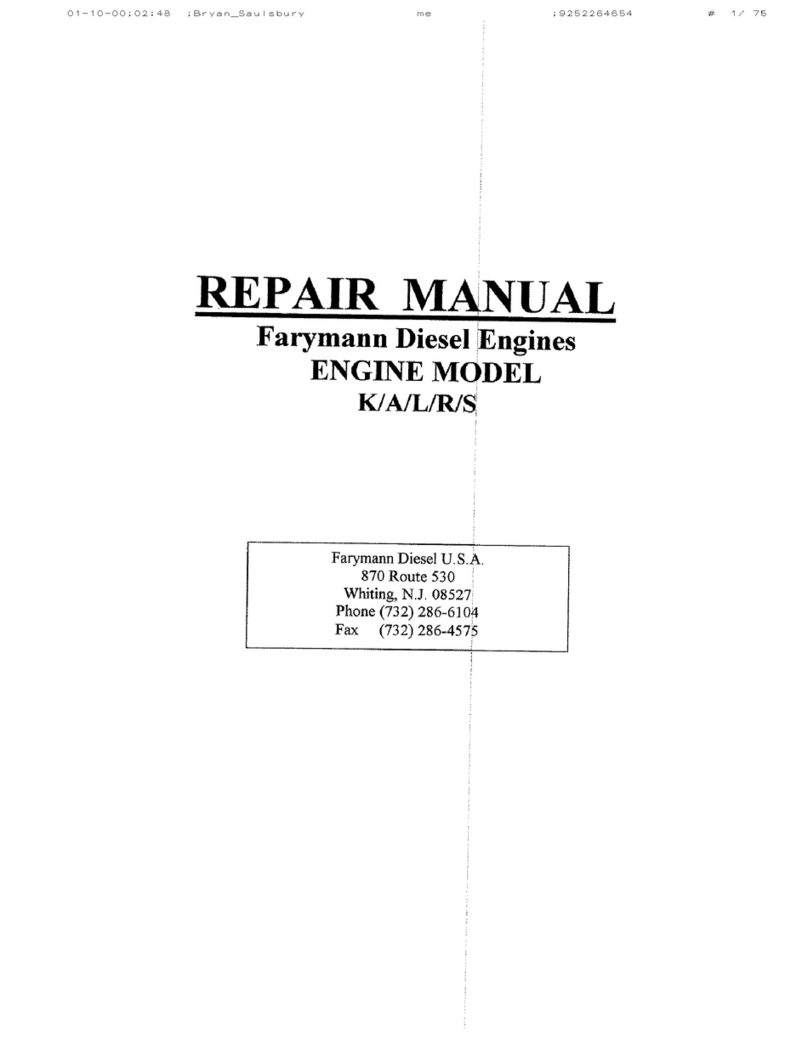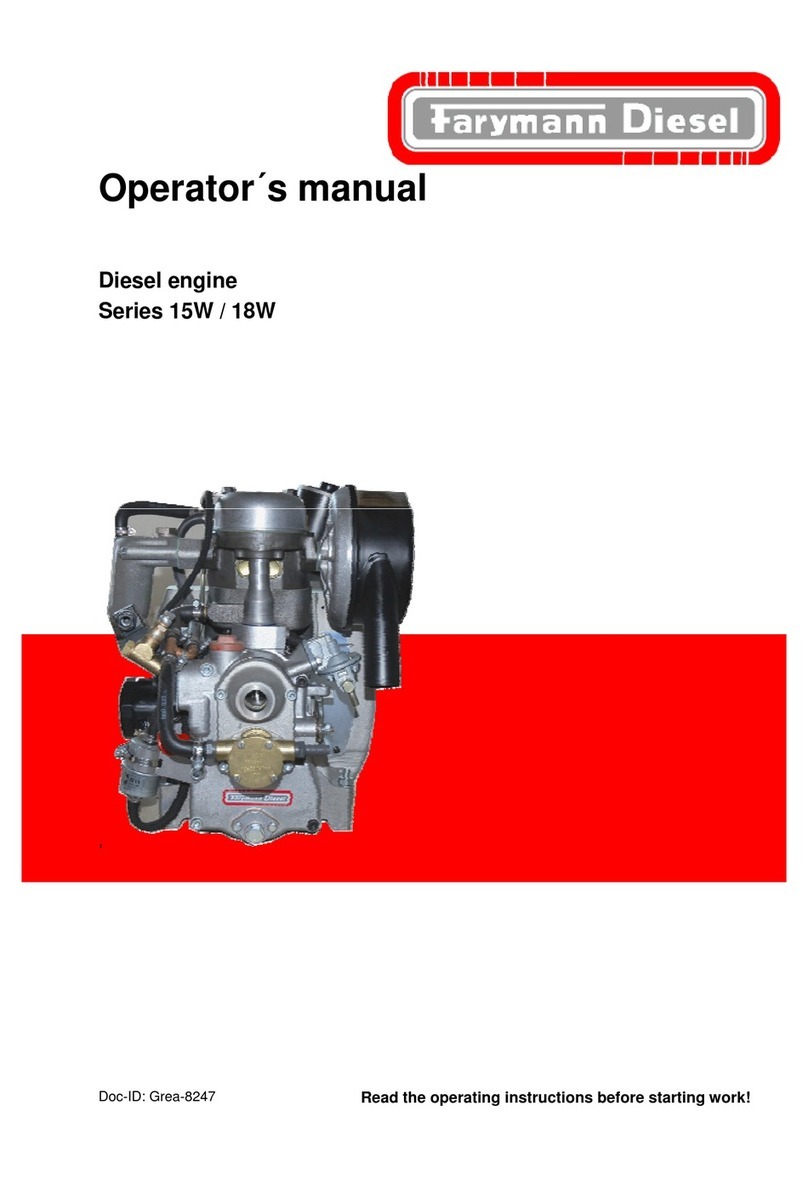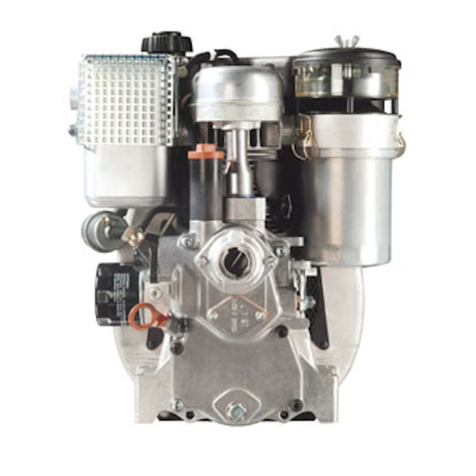
II. TECHNICAL DATA
9
II.1. General engine data
Specifications/engine type 15B/D 18B/D 29C 32A
______________________________________________________________________
Number of cylinders one, vertical
Combustion direct injection, 4 stroke
Bore/Stroke [mm] 75/55 82/55 90/74 95/74
Total displacement [cm3] 242 290 470 524
Compression ratio 1:20 1:20 1:19 1:20
______________________________________________________________________
Direction of rotation A+C+D: counter clockwise when viewed flywheel
B : clockwise when viewed flywheel
______________________________________________________________________
Performance data (full load)
Working speed, max. [min-1] 3600
Idle speed, min. [min-1] 900-1000
Output „A“ DIN 6270 [kW(Hp)] 3.5 (4.8) 4.2 (5.7) 6.6 (9) 7.1 ( 9.7)
„B“ DIN 6270 [kW(Hp)] 3.9 (5.3) 4.7 (6.4) 7.35(10) 7.9 (10.7)
„F“ DIN 70020 [kW(Hp)] 4.3 (5.8) 5.1 (6.9) 8.1 (11) 8.7 (11.8)
Mean piston speed [m/s] 6.6 6.6 8.88 8.88
Torque („F“ output) Nm/ min -1 12.5/2400 15.2/2500 24.5/2400 27.5/2400
Lub. oil pressure max. [bar] 4.0 4.0 5.0 5.0
(at 100°C (220°F) oil temp.)
Lub. oil pressure min. [bar] 1.8 1.8 2.0 2.0
(at 100°C (220°F) oil temp.)
Fuel consumption [g/kWh] 330 310 295 300
Lub. oil consumption [g/kWh] 1.0 1.0 1.0 1.0
Exhaust back
pressure max. [kPa] 5.0 5.0 5.0 5.0
Intake underpressure max. [kPa] 2.0 2.0 2.0 2.0
Operation temparatures
Lub. oil max. [°C(°F)] 130 (317) 130 (317) 130 (317) 130 (317)
Exhaust gas in
manifold max. [°C(°F)] 580 (1,415) 580 580 580
Entering cool. air max. [°C(°F)] 50 (122) 50 50 50
∆t cooling air
(at outlet cyl.-head) [°C(°F)] 50 (122) 50 50 50
Capacity
Lub. oil [dm3] 1.0 1.0 1.6 1.6
Fuel tank [dm3] 4.0 4.0 6.8 6.8
Weight
Engine (dry, standart,
flywheel) [kg] 39.5 39.2 70.5 70.0
Setting data
Valve clearance
cold engine [mm] 0.1 0.1 0.1 0.1
injection pressure [bar] 200 200 175 175
Working angle (standart oilpan)
lengthwise deg. 25 25 25 25
crosswise deg. 25 25 25 25

































